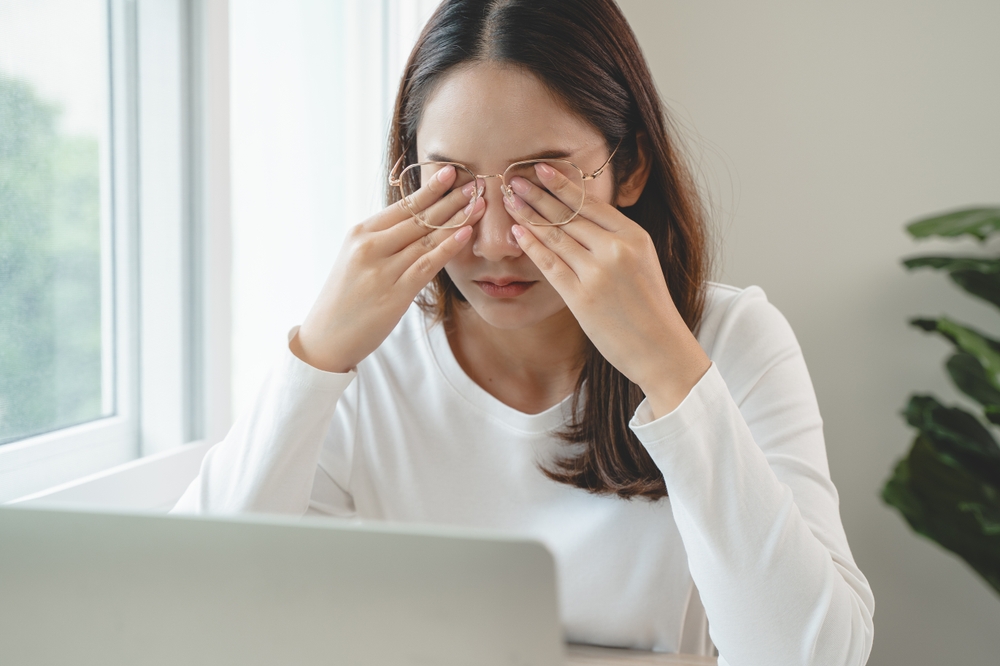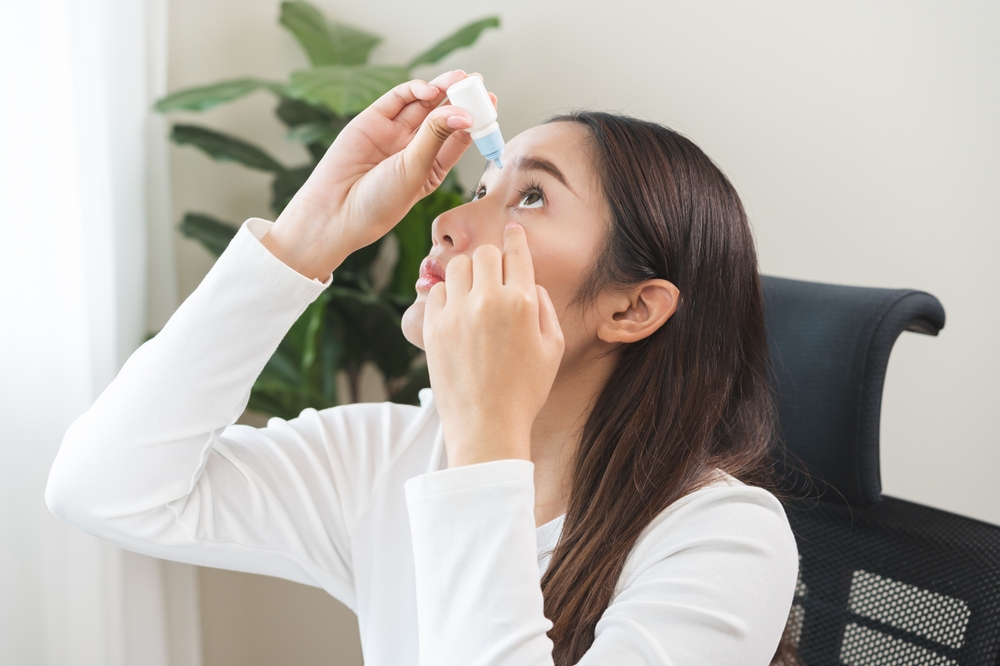Dry eye syndrome affects millions, causing discomfort and vision issues. Effective management is crucial to alleviate symptoms and improve quality of life. This guide explores seven proven remedies to help you manage dry eye symptoms effectively.
Artificial Tears for Dry Eye Syndrome: Your First Line of Relief
Artificial tears are often the first line of defense against dry eye syndrome. These over-the-counter solutions mimic natural tears, providing immediate relief. They lubricate the eye surface, reducing irritation and discomfort.

The composition of artificial tears varies. Most contain water, electrolytes, and polymers. Some formulations include preservatives, while others are preservative-free for sensitive eyes. Choosing the right type depends on individual needs and the severity of symptoms.
Benefits of artificial tears include ease of use and accessibility. They can be used multiple times a day without significant side effects. Regular use helps maintain eye moisture, preventing further irritation.
For best results, follow the instructions on the product label. Apply drops as needed, typically one to two drops per eye. Ensure hands are clean before application to avoid contamination.
Warm Compresses for Dry Eye Relief: A Simple Yet Effective Remedy
Warm compresses offer a simple yet effective remedy for dry eye syndrome. They help improve gland function, particularly the meibomian glands, which produce the oily layer of tears. This layer prevents tear evaporation, reducing dryness and irritation.
Using a warm compress is straightforward. Follow these steps:
- Heat a clean cloth: Soak it in warm water.
- Wring out excess water: Ensure the cloth is damp, not dripping.
- Apply to closed eyes: Hold the compress over your eyes for 5-10 minutes.
- Massage eyelids gently: Use circular motions to stimulate the glands.
Repeat this process daily for optimal results. Warm compresses can be used in conjunction with other treatments, such as artificial tears, to enhance relief. They are cost-effective and easy to incorporate into your daily routine.
Omega-3 Fatty Acids and Dry Eye Syndrome: Nutritional Support for Lasting Relief
Omega-3 fatty acids play a crucial role in eye health. They reduce inflammation and improve tear quality, addressing the root causes of dry eye syndrome. Studies show that omega-3 supplements can significantly alleviate dry eye symptoms.
Sources of omega-3s include fatty fish like salmon, mackerel, and sardines. Plant-based options include flaxseeds, chia seeds, and walnuts. Incorporating these foods into your diet can provide the necessary nutrients for eye health.
For those who prefer supplements, fish oil capsules are widely available. Look for high-quality products with a good balance of EPA and DHA, the two main types of omega-3s. Consult your healthcare provider before starting any new supplement regimen.
Regular intake of omega-3s can lead to noticeable improvements in eye comfort and tear stability. Combining dietary changes with other treatments, such as warm compresses and artificial tears, can offer comprehensive relief from dry eye symptoms.
Humidifiers for Dry Eye Relief: Improve Indoor Air Quality for Better Eye Comfort
Humidifiers can significantly reduce dry eye symptoms by increasing air moisture. Dry indoor air, especially during winter, exacerbates dry eye syndrome. A humidifier adds moisture to the air, helping maintain eye hydration.
When selecting a humidifier, consider the following:
- Type: Choose between cool mist, warm mist, or ultrasonic.
- Size: Ensure it suits the room size.
- Maintenance: Opt for easy-to-clean models to prevent mold and bacteria.
Place the humidifier in frequently used rooms, such as the bedroom or office. Keep humidity levels between 30-50% for optimal comfort. Regularly clean the device to ensure it functions effectively and safely.
Using a humidifier in conjunction with other treatments, like artificial tears and omega-3 supplements, can provide comprehensive relief. This multi-faceted approach addresses both environmental and physiological factors contributing to dry eye syndrome.
Prescription Eye Drops for Severe Dry Eye Syndrome: Advanced Treatment Options
When over-the-counter solutions fall short, prescription eye drops offer a more potent alternative. These medications target the underlying causes of severe dry eye syndrome, providing long-term relief. Common types include cyclosporine, lifitegrast, and corticosteroids.
Cyclosporine (Restasis) works by reducing inflammation and increasing tear production. Lifitegrast (Xiidra) also targets inflammation but through a different mechanism, blocking certain proteins that contribute to dry eye. Corticosteroids provide quick relief by reducing severe inflammation but are typically used short-term due to potential side effects.
Consider prescription eye drops if:
- Over-the-counter options are ineffective.
- Symptoms are severe and persistent.
- You have an underlying condition like Sjögren’s syndrome.
Consult an ophthalmologist for a proper diagnosis and treatment plan. They can determine the most suitable medication based on your specific needs. Combining prescription drops with other treatments, such as warm compresses and omega-3 supplements, can offer comprehensive relief.

Punctal Plugs for Chronic Dry Eye: A Long-Term Treatment Solution
Punctal plugs offer a long-term solution for chronic dry eye syndrome. These tiny devices are inserted into the tear ducts to block drainage, helping retain tears on the eye surface. This increases moisture and reduces symptoms.
The procedure is simple and quick. An ophthalmologist inserts the plugs into the puncta, the small openings in the corners of the eyelids. The process is minimally invasive and usually performed in the office. There are two types of plugs: temporary (dissolvable) and permanent (silicone).
Benefits of punctal plugs include:
- Immediate relief: Increased tear retention provides quick symptom relief.
- Long-lasting: Permanent plugs offer sustained benefits.
- Non-systemic: Localized treatment avoids systemic side effects.
Consider punctal plugs if other treatments are insufficient. They can be combined with artificial tears and prescription drops for comprehensive management. Consult your eye care provider to determine if this option suits your needs.
Hydration Tips for Dry Eye Relief: Simple Habits for Healthier Eyes
Staying hydrated is essential for overall eye health. Adequate hydration helps maintain the tear film, reducing dry eye symptoms. Dehydration can exacerbate dryness, leading to discomfort and irritation.
To stay hydrated, follow these tips:
- Drink water regularly: Aim for at least eight glasses a day.
- Limit caffeine and alcohol: These can dehydrate the body.
- Eat water-rich foods: Include fruits and vegetables like cucumbers, oranges, and watermelon.
- Use a water bottle: Keep it handy to remind yourself to drink.
Monitor your hydration levels by checking the color of your urine. Light yellow indicates good hydration, while dark yellow suggests you need more fluids. Combining proper hydration with other treatments, such as artificial tears and omega-3 supplements, can provide comprehensive relief from dry eye symptoms.
Take Control of Dry Eye Syndrome: Combine Remedies for Effective Relief
Managing dry eye syndrome requires a comprehensive approach. Combining these strategies can effectively manage dry eye symptoms. For personalized treatment options, visit The Cataract Surgeons.



